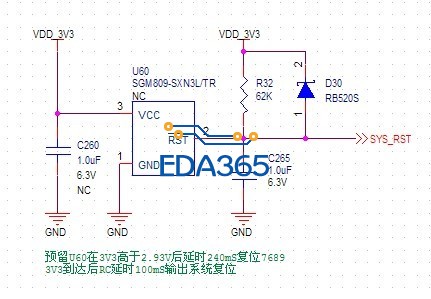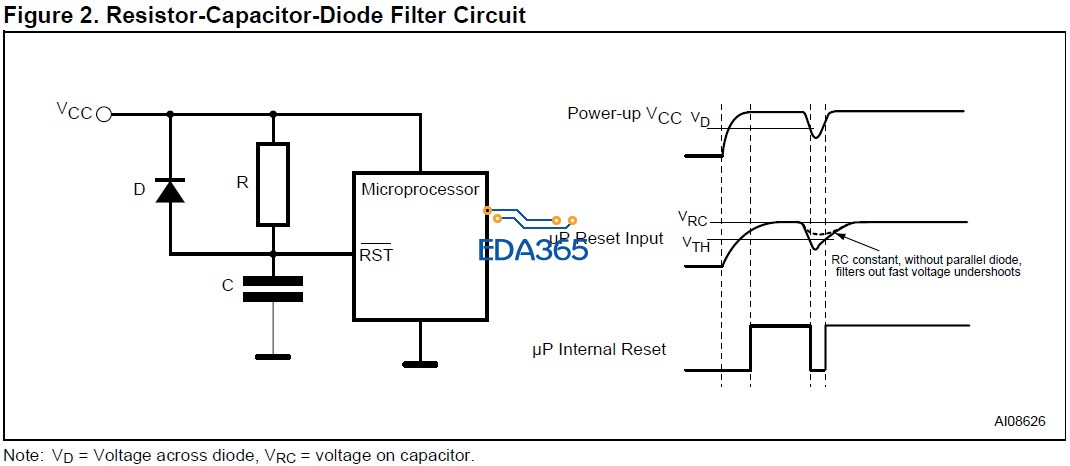复位电路原理是什么,D30在里面起什么作用,U60的工作原理是啥

不是都已经写的很清楚了吗?当VDD_3V3源高于2.93V时,/RST将输出高电平,如果你要将U60用上时,R32,C265,D30都要None掉!至于U60的内部工作原理,可以参考XC61CN2702这颗复位IC。
Resistor-Capacitor-Diode Filter Circuit
A Resistor-Capacitor-Diode (RCD) filter circuit (the same as the RC circuit with a diode added parallel to the resistor), can improve the response time to fast undershoots, but the drop in the voltage level must be greater than the forward turn-on voltage of the diode, before the diode can start to pull RST low.
Another limitation of this solution is that, the RCD filter circuit can only monitor drops in the voltage supply,that are greater than the microprocessor’s tolerance voltage plus the diode drop.
As for the Power-up/Reset phase, a better solution is to use an external Reset device like the ST Reset Circuits, which are also ideal for monitoring the voltage level during operations (see Integrated Reset Circuits section).

用芯片复位的电路,?要用2级管了

個人支持二樓,U60是較正規的作法,當U60不上時,以RCD取代該IC
一般我們知道,系統必須在電源穩定時才能正常工作,因此我們會延時從供電到RESET拉high的時間,等到電源穩定才拉高Reset。U60的功能就是做此延時,當VDD_3V3到達2.93V後再延遲240mS才將SYS_RST拉高,確保啟動時電源是穩定的
RCD是便宜的作法,利用RC產生的延遲從供電到拉高RESET的時間間隔,但僅有RC時,RESET會變成慢充慢放,這樣導致的問題是在VDD_3V3掉下來時,SYS_RST還在慢慢放,要是VDD_3V3關開的間隔很短時,可能SYS_RST就不會拉到低準位(請參考SuperGo的波形),因此加了一顆DIODE,當VDD_3V3掉下去時,SYS_RST會順著DIODE放電,確保SYS_RST拉低,此時撥形應該變成慢充快放。(拉高時延時,拉低時與VDD_3V3同步)
顶一个,笔试还做过
加了电容这个应该双向复位功能,三极管作用是断电时加速电容放电从而不影响二次复位
5楼正解。
做个记号
